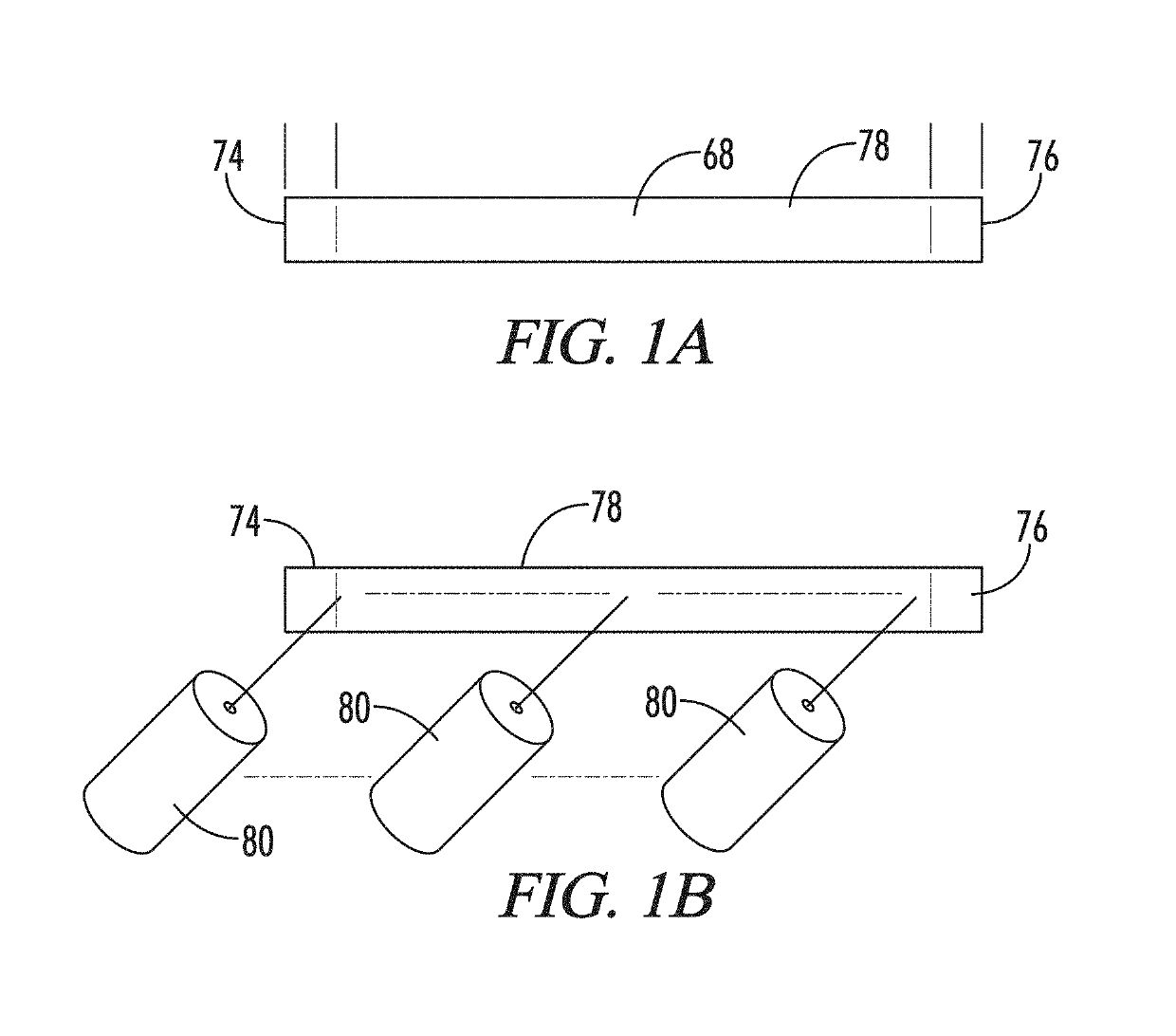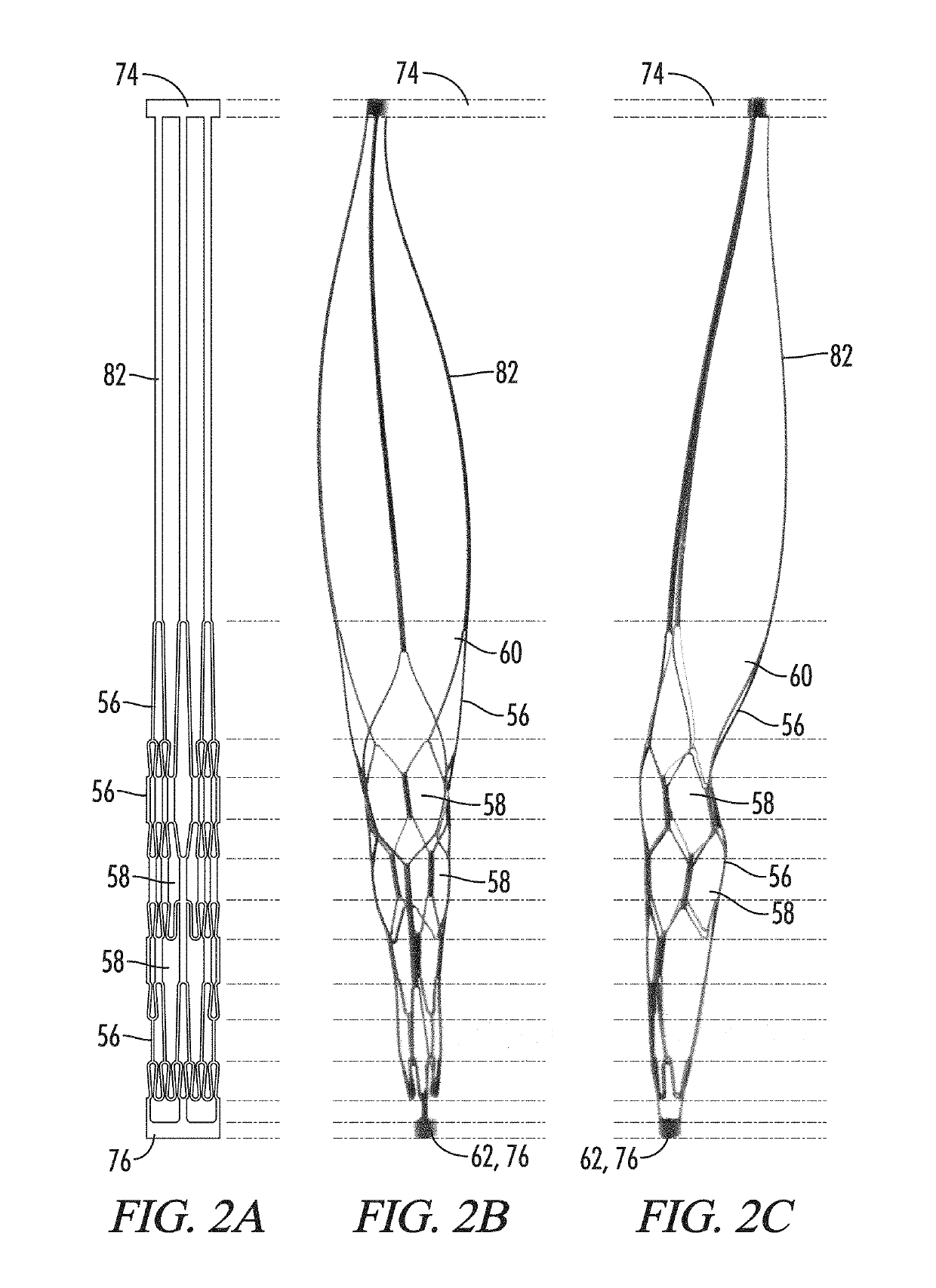Clot retrieval system
a retrieval system and clot technology, applied in the field of deployable systems, can solve the problems of limited intracranial obstruction removal, risk of further ischemia, risk of vessel injury, etc., and achieve the effect of easy and cheap manufacturing
- Summary
- Abstract
- Description
- Claims
- Application Information
AI Technical Summary
Benefits of technology
Problems solved by technology
Method used
Image
Examples
Embodiment Construction
[0522]With reference to FIGS. 1-10, the present disclosure provides a deployable system, generally designated by the numeral 10, for removing an obstruction such as a blood clot 12 or other object from a blood vessel 14 or other interior lumen of an animal. In addition to a blood clot 12, the obstruction may be, for example, extruded coils during aneurysm treatment, intravascular embolic material such as onyx or other obstructions requiring mechanical intravascular removal from small distal vessels. In the drawings, not all reference numbers are included in each drawing for the sake of clarity.
[0523]Referring further to FIGS. 1-10, the deployable system 10 includes a pull wire 16 that has a proximal end (not shown) and a distal end 20. Optionally, the diameter of the pull wire is between about 0.008 inches and about 0.051 inches. Preferably, the pull wire 16 is comprised of a biocompatible metallic material.
[0524]The system 10 further includes a distal body 22, which is attached to ...
PUM
 Login to View More
Login to View More Abstract
Description
Claims
Application Information
 Login to View More
Login to View More - R&D
- Intellectual Property
- Life Sciences
- Materials
- Tech Scout
- Unparalleled Data Quality
- Higher Quality Content
- 60% Fewer Hallucinations
Browse by: Latest US Patents, China's latest patents, Technical Efficacy Thesaurus, Application Domain, Technology Topic, Popular Technical Reports.
© 2025 PatSnap. All rights reserved.Legal|Privacy policy|Modern Slavery Act Transparency Statement|Sitemap|About US| Contact US: help@patsnap.com



